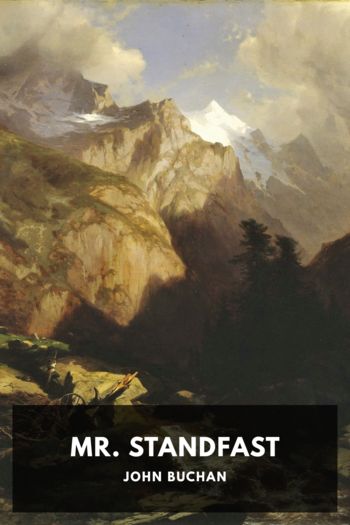Freedomnomics: Why the Free Market Works and Other Half-Baked Theories Don't by John Jr. (books to read for 12 year olds txt) 📗

- Author: John Jr.
Book online «Freedomnomics: Why the Free Market Works and Other Half-Baked Theories Don't by John Jr. (books to read for 12 year olds txt) 📗». Author John Jr.
10 Figure 2 shows the raw data, but there are other factors that are also changing over time. While giving women the right to vote was the main factor, other factors included the manufacturing wage, fraction of the population over 65, percent of population living in rural areas, total population, percent of workers that were females, percent of workers in manufacturing, and voting regulations.
11 Real per capita expenditures grew from $101 to $208. By comparison, 1994 per capita state government expenditures in 1996 dollars averaged $3,177. See John R. Lott, Jr. and Lawrence Kenny, “Did Women’s Suffrage Change the Size and Scope of Government?,” Journal of Political Economy, vol. 107, no. 6, part 1, December 1999: 1163-98.
12 Ibid.
13 Immigrants experienced the same delay - between 1870 and 1940, for each 10 percent of Americans who were foreign born, the voter turnout rate was reduced another 5 percentage points. The younger people were when they arrived in America, the smaller the decline in voter turnout. As we shall see, a similar delay was evident among African Americans as well.
14 John R. Lott, Jr. and Lawrence Kenny, “Did Women’s Suffrage Change the Size and Scope of Government?,” Journal of Political Economy, vol. 107, no. 6, part 1, December 1999: 1183.
15 Ibid. Interestingly, men raising children on their own are only three percent more likely to vote Democratic than single men without children.
16 The poll tax also made Prohibition more likely by reducing the political influence of the poor, who generally opposed prohibition.
17 While the original thirteen U.S. states had some type of property or tax requirement to vote, all of them had cancelled the requirement by 1856. See Stanley Engerman and Kenneth Sokoloff, “The Evolution of Suffrage Institutions in the New World,” National Bureau of Economic Research working paper 8512.
18 Much of this discussion is based upon John R. Lott, Jr., “Evidence of Voter Fraud and the Impact that Regulations to Reduce Fraud have on Voter Participation Rates,” SUNY Binghamton working paper (http://ssrn.com/abstract=925611).
19 The Twenty-Fourth Amendment to the Constitution banned poll taxes for federal elections, while the Voting Rights Act abolished them in state elections.
20 John E. Filer, Lawrence W. Kenny, and Rebecca Morton, “Voting Laws, Educational Policies, and Minority Turnout,” Journal of Law and Economics , vol. 34, October 1991: 371-393.
21 A $1-2 fee in 1940 is roughly equivalent to $14-28 today. Larry Kenny and I set up an extensive empirical analysis to test the impact of these fees and other voting rules. Data on up to 36 biennial elections from 1870 to 1940 were obtained for the 48 states. Infrequent elections and recent statehood reduced the sample to 1,215 elections. The dependent variable is defined as the fraction of the total population aged 21 or older who voted in the state’s gubernatorial election. This variable ranges from 2 to 83 percent, with a mean of 37 percent. The socioeconomic and voting law variables that are used to explain changes in voter participation rates include: fixed year and state effects, fraction of population age 65 and older, fraction of population that is illiterate, relative manufacturing wage, real manufacturing wage, female workers, rural population, rural population squared, fraction of the population that is foreign born, winning governor vote share, dummy for a Senate election, and dummy for a presidential election, as well as variables for female suffrage, poll tax, literacy test, and secret ballot. For a more extensive discussion see Lott and Kenny, “Did Women’s Suffrage Change the Size and Scope of Government?” 1163-1198, and Filer, Kenny, and Morton, “Voting Laws, Educational Policies, and Minority Turnout,” 371-93.
22 However, there were only three statewide elections from the late 1970s to 1984 where Republicans won by less than one percentage point and the outcome would thus have been affected (Texas U.S. Senate and Governor races in 1978 and Virginia U.S. Senate 1978). There is also the Arkansas U.S. Presidential race in 1980, but Reagan’s landslide would not have been altered by the Arkansas vote. See John R. Lott, Jr., “Evidence of Voter Fraud and the Impact that Regulations to Reduce Fraud have on Voter Participation Rates,” SUNY Binghamton working paper (http://ssrn.com/abstract=925611).
23 “Citizens vote by secret ballot so that they can vote without fear of how others will react” (http://www.voteutah.org/learning/elections/voting.html).
24 This occurred when states introduced secret ballots during the 1882-1950 period. This 4 or 5 percentage point drop in turnout is equivalent to an 8-12 percent drop. See Lott and Kenny, “Did Women’s Suffrage Change the Size and Scope of Government?,” 1196.
25 Frederic Charles Schaffer, “Might Cleaning Up Elections Keep People Away from the Polls? Historical and Comparative Perspectives,” International Political Science Review, vol 23, no. 1, 2002: 69-84.
26 Mark Lawrence Kornbluh, Why America Stopped Voting: The Decline of Participatory Democracy and the Emergence of Modern American Politics (New York: New York University Press, 2000).
27 John R. Lott, Jr., “Why is Education Publicly Provided?: A Critical Survey,” Cato Journal, Fall 1987, 475-501. My study with Kenny, as well as many others, found that higher income individuals are more likely to vote. See Lott and Kenny, “Did Women’s Suffrage Change the Size and Scope of Government?,” 1175.
28 Jac C. Heckelman, “The effect of the secret ballot on voter turnout rates,” Public Choice, volume 82, numbers 1- 2, January 1995: 107-124.
29 Some literacy tests also asked factual





Comments (0)